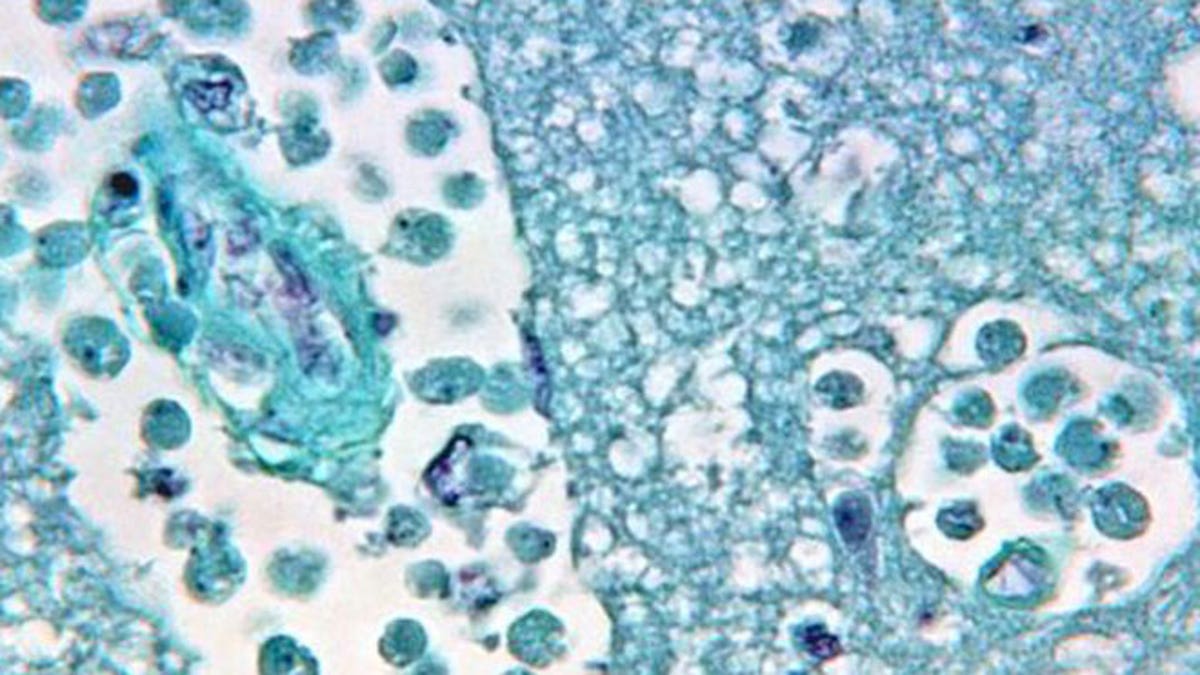
Naegleria fowleri, also referred to as the "brain-eating amoeba" or "brain-eating ameba," thrives in freshwater at warm temperatures. It can cause a rare but deadly infection of the brain called primary amebic meningoencephalitis (PAM). (Dr. George R. Healy, CDC)
An Oklahoma man has died after contracting a waterborne disease while swimming in a local lake, the Oklahoma State Department of Health told OKCFox.com.
The man, referred to only as a Carter County resident, contracted Primary Amebic Meningoencephalitis (PAM), a rare infection that derives from contact with Naegleria fowleri— also referred to as the brain-eating amoeba— while swimming in Lake Murray, a 5,700-acre lake in the south central part of the state.
According to the Centers for Disease Control and Prevention (CDC), the amoeba is naturally present in most freshwater sources— like lakes, rivers and hot springs— and rapidly multiplies in very warm, stagnant water. Infection usually occurs when a person inhales contaminated water through the nose, by which the amoeba travels upward in the body, destroying brain tissue and causing brain swelling and death. The disease can’t be transmitted from person to person.
"If you're diving or playing or swimming and you accidentally inhale water into your nose, and the amoeba gets into your nose, it travels up into the brain and causes encephalitis," Laurence Burnsed, an epidemiologist with the Oklahoma State Department of Health, told the news station.
The devastating disease has historically claimed its victims' lives within days. Swimmers can protect themselves from PAM by not submerging their heads underwater, Burnsed advised.
According to the CDC, PAM may also occur when contaminated water from inadequately chlorinated swimming pools, or when heated and contaminated tap water enters the nose. Drinking water contaminated with the amoeba does not result in infection.
Immediate symptoms of PAM, which include headache, fever nausea or vomiting, usually occur about five days after infection, but that period can range from one to nine days.
OKCFox.com reported that PAM is more likely in places with warmer weather and the South, but there have been seven cases of the disease in Oklahoma since 1999.
Of the 133 reported cases of PAM in the United States since 1962, only three people survived, according to the CDC.
